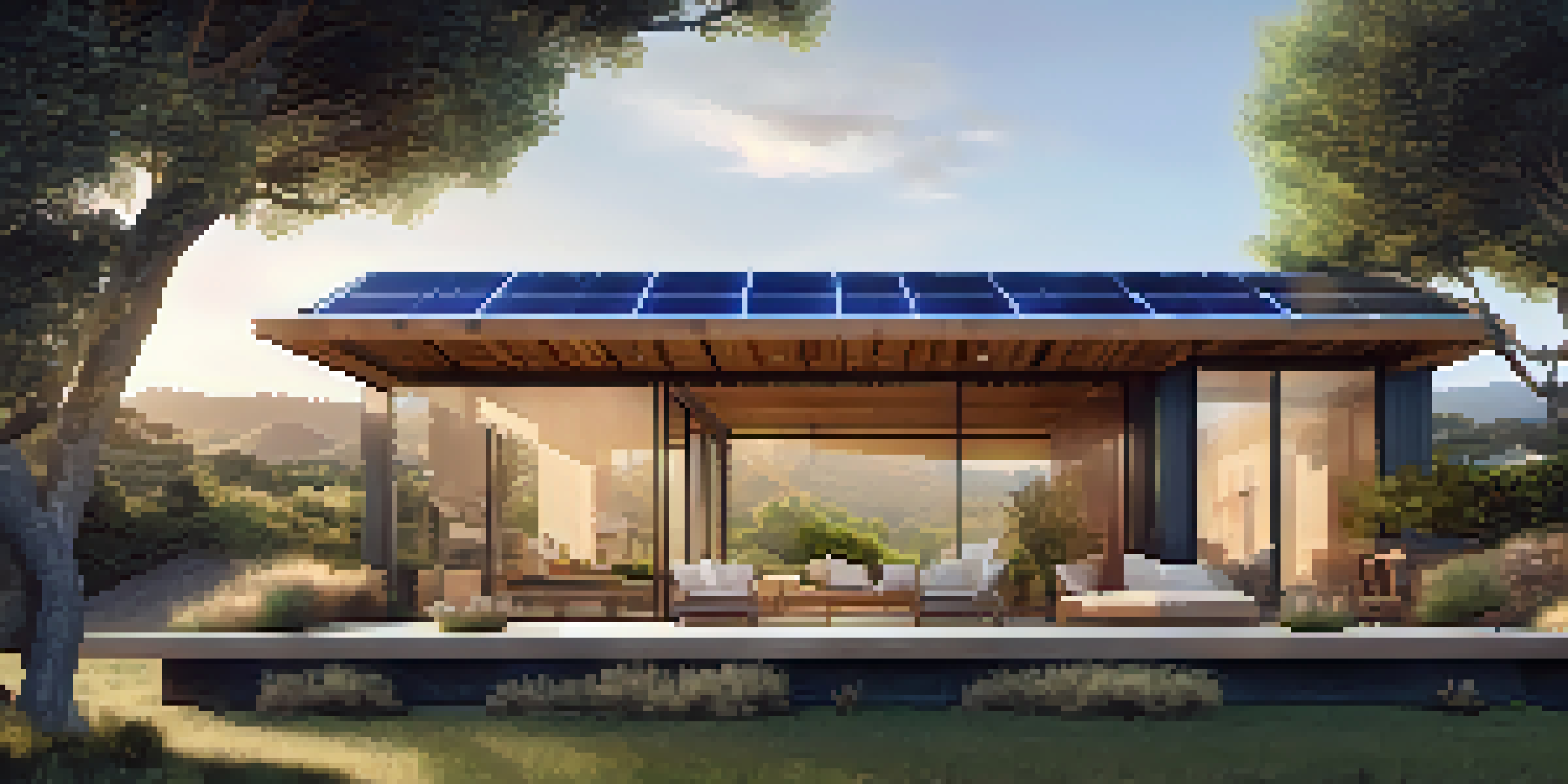California's Contribution to Sustainable Architecture Trends

Introduction to Sustainable Architecture in California
California has long been a leader in innovation and sustainability, especially in architecture. The state's diverse climate and natural beauty foster a unique approach to designing buildings that harmonize with the environment. Sustainable architecture emphasizes energy efficiency, resource conservation, and eco-friendly materials, making it a perfect fit for California's ethos.
The future will be green, or not at all.
As the world grapples with climate change, California's architects and designers are stepping up to create spaces that minimize ecological footprints. From solar panels to rainwater harvesting systems, the state is a laboratory for sustainable building practices. This commitment not only enhances the livability of urban areas but also showcases a blueprint for global sustainability efforts.
The following sections will explore various aspects of California’s contribution to sustainable architecture, highlighting innovative practices, influential projects, and the role of community engagement in these trends.
Key Innovations in Sustainable Building Materials
One of the cornerstone principles of sustainable architecture is the use of environmentally friendly materials. California architects are pioneering the use of recycled, reclaimed, and rapidly renewable resources to reduce waste and lower carbon footprints. For example, using bamboo, a fast-growing grass, instead of traditional timber significantly decreases deforestation rates.

Additionally, California's focus on local materials minimizes transportation emissions and supports regional economies. This approach not only promotes sustainability but also fosters a connection between the built environment and the surrounding landscape. It's a win-win for both the planet and the community.
Sustainable Materials Lead Innovation
California architects are pioneering the use of recycled and rapidly renewable materials, enhancing both sustainability and aesthetic appeal.
Moreover, innovative materials like mycelium-based composites and hempcrete are gaining traction in California, showcasing how creativity can drive ecological responsibility. These materials are not only sustainable but also offer unique aesthetic qualities that enrich architectural designs.
The Rise of Energy-Efficient Buildings
Energy efficiency is at the heart of California's sustainable architecture movement. With strict building codes and regulations, such as Title 24, California has set the bar high for energy performance in buildings. By incorporating advanced insulation, energy-efficient windows, and smart technologies, new constructions are designed to consume significantly less energy.
Sustainability is no longer about doing less harm. It's about doing more good.
The integration of renewable energy sources, particularly solar power, is also a hallmark of California's approach. Many homes and commercial buildings are equipped with solar panels, allowing them to generate their own electricity and reduce reliance on fossil fuels. This transition not only lowers utility costs for residents but also contributes to a more sustainable energy grid.
Moreover, energy-efficient designs often include passive solar strategies, such as optimal building orientation and thermal mass, which play a crucial role in minimizing energy consumption. By harnessing natural light and airflow, these designs enhance comfort while reducing the need for artificial heating and cooling.
Water Conservation Techniques in Architecture
In a state often plagued by drought, California architects prioritize water conservation in their designs. Implementing rainwater harvesting systems allows buildings to collect and reuse stormwater, significantly reducing dependency on municipal water supplies. This practice not only promotes sustainability but also cultivates a responsible approach to water use.
Xeriscaping, or landscaping that reduces the need for irrigation, is another innovative technique gaining popularity in California. By using drought-tolerant plants and efficient irrigation systems, architects create beautiful outdoor spaces that thrive in arid conditions. This not only conserves water but also enhances biodiversity and supports local ecosystems.
Energy Efficiency Drives Design
Strict regulations and innovative technologies in California promote energy-efficient buildings that reduce reliance on fossil fuels.
Additionally, greywater recycling systems allow homeowners to reuse water from sinks, showers, and washing machines for irrigation. This closed-loop system exemplifies how architecture can actively contribute to sustainable living by optimizing water resources.
Community Engagement in Sustainable Projects
Sustainable architecture in California extends beyond the buildings themselves; it encompasses the communities they serve. Engaging local communities in the design process ensures that projects reflect the needs and values of the people who will inhabit them. This collaborative approach fosters a sense of ownership and pride in sustainable initiatives.
Community feedback can lead to innovative design solutions that address specific environmental and social challenges. For instance, the development of community gardens and green spaces not only beautifies neighborhoods but also promotes local food production and social interaction. This highlights the interconnectedness of sustainable architecture and community well-being.
Furthermore, educational programs and workshops help raise awareness about sustainable practices, empowering individuals to adopt eco-friendly choices in their daily lives. By fostering a culture of sustainability, California is paving the way for future generations to prioritize environmental stewardship.
Influential Sustainable Architecture Projects
California is home to numerous groundbreaking sustainable architecture projects that serve as models for others to follow. The California Academy of Sciences in San Francisco, designed by Renzo Piano, is a prime example. With its living roof, energy-efficient systems, and use of sustainable materials, it seamlessly integrates with its natural surroundings while educating visitors about environmental conservation.
Another noteworthy project is the Bullitt Center in Seattle, often referred to as the greenest commercial building in the world. While not in California, its influence resonates throughout the state, inspiring architects to push the boundaries of sustainable design. Its innovative features, such as composting toilets and rainwater harvesting, showcase what is possible when sustainability is prioritized.
Community Involvement Fuels Projects
Engaging local communities in the design process ensures that sustainable architecture reflects the needs and values of its users.
These projects serve as beacons of hope and inspiration, demonstrating that sustainable architecture can be both functional and aesthetically pleasing. They challenge conventional design norms and encourage the adoption of eco-friendly practices across the globe.
The Future of Sustainable Architecture in California
As California continues to grapple with climate change, the future of sustainable architecture looks promising. Innovations in technology and materials will further enhance the efficiency and sustainability of buildings. For instance, advancements in smart home technologies will allow homeowners to monitor and control energy usage more effectively.
Moreover, a growing emphasis on biophilic design—an approach that connects people with nature—will influence future architectural trends. By incorporating natural elements such as plants, daylight, and water features, architects can create spaces that promote well-being and environmental awareness.

Ultimately, California's commitment to sustainability will likely inspire other regions to adopt similar practices. By leading the charge in sustainable architecture, California sets an example for the world, showcasing how thoughtful design can address pressing environmental challenges while enhancing quality of life.